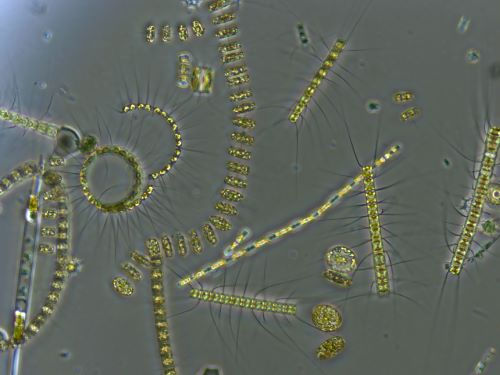Long-Chain Fatty Acids: Humans & Environment
- Sylvia Rose

- Feb 14
- 3 min read
Updated: Feb 15
Long-chain fatty acids (LCFAs) are nutritional components of human and environmental health. From supporting brain function to regulating climate, these molecules manifest in plenty of processes.

What are Long-Chain Fatty Acids?
Long-chain fatty acids are defined by hydrocarbon chains of 12 or more carbon atoms. These fatty acids can be saturated, without double bonds, or unsaturated, containing one or more double bonds.
Examples of long chain fatty acids incudes palmitic acid (16 carbon atoms), stearic acid (18 carbon atoms), and omega-3 fatty acids like EPA (eicosapentaenoic acid - 20 carbon atoms) and docosahexaenoic acid (DHA - 22 carbon atoms).

Long-Chain Fatty Acids in Human Health
LCFAs provide more than twice the calories per gram compared to carbohydrates or proteins. They're stored as triglycerides in adipose tissue, an available reserve in times of food deprivation or extreme energy needs.
Long-chain fatty acids are used for cell structures, membrane integrity and function. They also act as precursors for significant bioactive compounds, including hormones and signaling molecules, which regulate numerous bodily functions.

Long-chain fatty acids have several functions in maintaining health. They support activities like brain function and heart health.
Certain LCFAs, particularly the omega-3 and omega-6 fatty acids, are precursors to eicosanoids. These hormone-like substances regulate inflammation, blood clotting, and immune responses.
LCFAs help absorb fat-soluble vitamins (A, D, E, and K) from the digestive tract. Some LCFAs, like docosahexaenoic acid (DHA), work in brain development and function. DHA is a component of brain cell membranes.

Long-chain fatty acids are linked to cardiovascular health. Anti-inflammatory properties of long-chain fatty acids help manage chronic diseases like arthritis and metabolic syndrome.
LCFAs are components of cell membranes, contributing to their fluidity and stability. They are also vital components of myelin, the protective sheath surrounding nerve fibers, ensuring efficient nerve impulse transmission.

Sources of Long-Chain Fatty Acids
Humans obtain LCFAs primarily through dietary sources, including:
Animal Products: Meat, poultry, fish, and dairy products; fatty fish like salmon, tuna, and mackerel.
Plant-Based Oils: Vegetable oils like olive, sunflower and soybean oil.
Nuts and Seeds: Walnuts and chia seeds.
Avocados: source of monounsaturated fatty acids.

Humans & Environment
Pollution: Industrial and agricultural run-off can introduce pollutants that interfere with the synthesis and degradation of LCFAs in aquatic ecosystems, disrupting food webs.
Climate Change: Changes in temperature and ocean acidification can affect the composition of phytoplankton communities, altering the production and distribution of LCFAs.
Aquaculture: The release of uneaten feed and fish waste from aquaculture farms can introduce excess LCFAs into the environment, potentially leading to eutrophication and related ecological problems.

In marine habitats long-chain fatty acids are created by phytoplankton. They convert sunlight into energy by photosynthesis, producing LCFAs to support nutrient cycling and energy flow through aquatic ecosystems.
LCFAs are major components of sedimentary organic matter, contributing to the carbon cycle and long-term carbon storage. These fatty acids are biomarkers to trace the source and fate of organic matter in aquasystems.

Long-chain fatty acids can accumulate in marine species. LCFAs in the tissues of fish and other marine life causes higher concentrations in predatory species.
Long-chain fatty acids also contribute to carbon cycling. Phytoplankton absorb carbon dioxide and release oxygen, and their production of LCFAs is a crucial part of this process.

Non-Fiction Books:
Fiction Books:
READ: Lora Ley Adventures - Germanic Mythology Fiction Series
READ: Reiker For Hire - Victorian Detective Murder Mysteries


